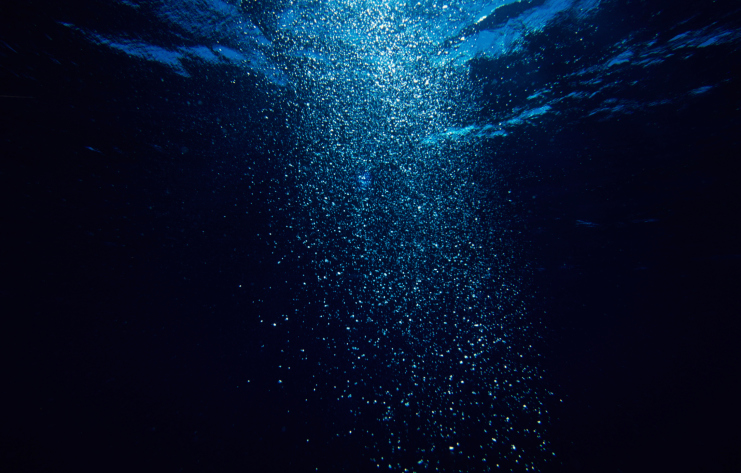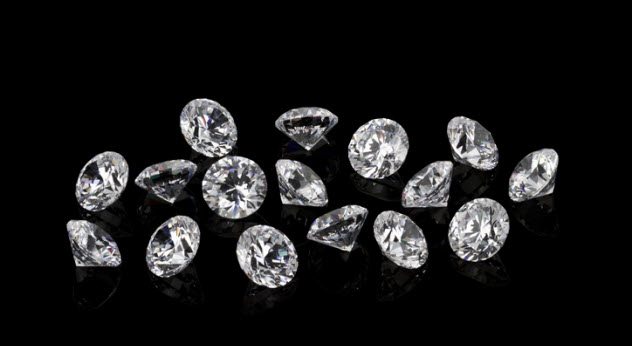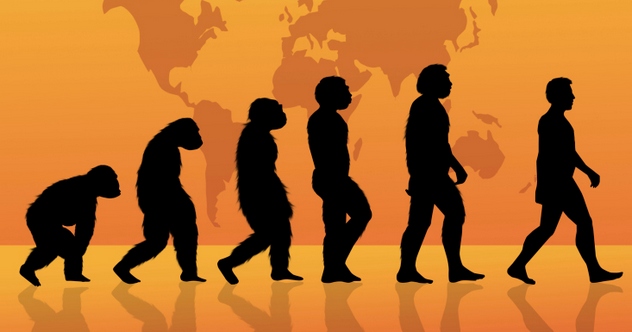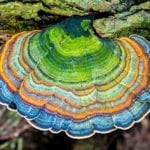 Mysteries
Mysteries  Mysteries
Mysteries  History
History 10 Surprising Stories About the Texas Rangers
 Humans
Humans 10 Philosophers Who Were Driven Mad by Their Own Theories
 Miscellaneous
Miscellaneous 10 Video-Game-Worthy Weapons and Armors from History
 Weird Stuff
Weird Stuff 10 Psychics Who Accurately Predicted Wartime Events
 The Arts
The Arts 10 Pieces of Art Inspired by a Broken Heart
 Health
Health 10 Science Fiction-Sounding New Medical Treatments
 History
History 10 Surprising Facts About the Father of Submarine Warfare
 Space
Space Ten Astonishing New Insights into Alien Worlds
 Weird Stuff
Weird Stuff 10 Bizarre Summer Solstice Rituals Still Practiced Today
 Mysteries
Mysteries Top 10 Haunting Facts About the Ghost Ship MV Alta
 History
History 10 Surprising Stories About the Texas Rangers
 Humans
Humans 10 Philosophers Who Were Driven Mad by Their Own Theories
Who's Behind Listverse?

Jamie Frater
Head Editor
Jamie founded Listverse due to an insatiable desire to share fascinating, obscure, and bizarre facts. He has been a guest speaker on numerous national radio and television stations and is a five time published author.
More About Us Miscellaneous
Miscellaneous 10 Video-Game-Worthy Weapons and Armors from History
 Weird Stuff
Weird Stuff 10 Psychics Who Accurately Predicted Wartime Events
 The Arts
The Arts 10 Pieces of Art Inspired by a Broken Heart
 Health
Health 10 Science Fiction-Sounding New Medical Treatments
 History
History 10 Surprising Facts About the Father of Submarine Warfare
 Space
Space Ten Astonishing New Insights into Alien Worlds
 Weird Stuff
Weird Stuff 10 Bizarre Summer Solstice Rituals Still Practiced Today
10 Common Misconceptions Regarding Natural Phenomena
Many people are loathe to admit that they are not sure of the facts, especially, it seems, when the facts in question are related to scientific subjects. Some individuals go even so far as to insist that nobody could be ignorant enough to believe certain misconceptions about physics, astronomy, biology, meteorology, botany, pathology, geography, embryology, and other scientific fields. Like scientists, educators know better: they frequently witness such “impossible” beliefs among both members of the general public and students at every educational level.
While it is probably true that most people are not scientifically illiterate, it is likely to be equally true that many, if not most, individuals have gaps in their knowledge and understanding of the sciences and have several false ideas about such fields of study. People who labor under the misconceptions on this list certainly do.
10 Dumb Lies That Tricked People With Numbers
10 Bubbles in Boiling Water Consist Primarily of Air

Oakland University researchers found that some people find “scientific concepts too difficult . . . to understand,” primarily because the concepts contradict such individuals’ everyday experience and people prefer to accept ideas that correspond to their own beliefs. As indicated by their answers on a true-or-false test, some of the survey’s respondents believed that bubbles in boiling water consist primarily of air.
When a container of water is heated, air bubbles consisting of the gases in the atmosphere (normally nitrogen, oxygen, and carbon dioxide) form and rise in the container. However, as the water’s temperature increases, the chemical composition of the air bubbles actually changes. Water vapor forms around the air bubbles as the water begins to vaporize. By the time the water reaches its boiling point (100 degrees Celsius, or 212 degrees Fahrenheit), the bubbles are made up completely of water vapor. Like the air bubbles that were first present, before the water started boiling, the rising water vapor bubbles expand because, as they near the surface of the water, the bubbles encounter less pressure.
9 Black Holes Swallow Everything

Nothing can escape black holes. In fact, they’re “black,” or invisible, because they “swallow” light. Therefore, if a black hole appears at the center of a galaxy, it is only a matter of time before the collapsing star sucks up the whole aggregate of stars, gas, and dust clustered around it. These statements summarize the misconceptions many have about the cosmic dangers represented by black holes.
In reality, black holes are not cosmic “vacuum cleaners.” Even if our own sun collapsed, becoming a black hole, it would not suck the Milky Way into oblivion. It would shrink to a diameter of six kilometers (four miles), without any increase in the amount of its gravitational force on the planets orbiting it, since, in its collapsed state, the sun would contain the same amount of matter and would remain the same distance from the planets. Neither its own orbit nor those of the planets would alter. Life wouldn’t survive, though, since the sun’s light would be extinguished. We would die, but it wouldn’t be because we were sucked into a black hole.
8 Diamonds Come from Coal

Occasionally, in DC Comics, Superman, feeling generous, would squeeze a lump of coal, apply a little of his heat vision, and, as a result of the tremendous pressure and heat he applied to the rock, produce a huge, glittering diamond in a matter of a second or two.
Scientists also create diamonds in their labs, using High-Pressure-High-Heat technology instead of the Man of Steel’s muscle power and heat vision. On a super-expedited timescale, both Superman and the scientists essentially replicate the environmental conditions under which carbon is converted into diamonds deep underground over a period of millions, possibly billions, of years.
However, neither Superman nor scientists fully recreate the process that Mother Nature uses to make diamonds. Both the Man of Steel and the scientists speed up the time that the natural process takes and they use material other than pure carbon. Superman substitutes coal, and scientists use graphite, instead of carbon.
Although coal and graphite are actually quite similar, coal and carbon are not that much alike. Coal is made up of 10% to 50% carbon and contains dead, geologically processed plant matter. Coal might also contain various amounts of such chemical elements as oxygen, hydrogen, sulfur, and nitrogen, not to mention organic matter. Although the quality of Superman’s diamonds could be enhanced by these “impurities,” making them more valuable, their presence in coal is sparse. On the other hand, the relative rarity of natural diamonds makes them far more expensive than their synthetic counterparts.
7 Evolution Happens Purely by Chance

Most people know that evolution occurs purely by chance. What they don’t know is that they are wrong. Evolution does not happen by chance alone, although certainly happenstance is involved. The misconception lies in the failure to factor in the role of natural selection.
As University of California Museum of Paleontology experts point out, such natural processes as “the fit between a flower and its pollinator, the coordinated response of the immune system to pathogens, and the ability of bats to echolocate” evolved as a result of both the random process of mutation and the non-random process of natural selection. Therefore, “to say that evolution happens ‘by chance’ ignores half of the picture.”
6 A Highway Overpass Provides Safe Shelter from a Tornado

To be caught in the open countryside as a tornado approaches would no doubt be a terrifying experience, unless, of course, a highway overpass was nearby. Then, there would be no need to panic. Such a structure provides safe shelter from such violently rotating columns of air—at least according to another common misconception.
In reality, bridges and other highway overpasses are anything but safe places under which to wait out tornadoes. Yes, such structures are strong and sturdy enough to stand up to a tornado. They will survive twisters. The problem is that they will not protect a person, not against whirling debris and not against the tremendous force of the whirlwind itself.
In fact, winds associated with tornadoes can be even more intense beneath overpasses. In addition, such structures typically do not offer surfaces to hold onto or ledges to hunker down on. Tornadoes are known to change direction in an instant, so a twister can switch from a protected side of the overpass to an unprotected side in mere seconds.
5 Bananas Grow on Trees

Money may not grow on trees, but bananas do. Actually, bananas grow on herbs—perennial herbs, or herbaceous flowering plants in the genus Musa, to be exact. These plants are as large as some trees, though, growing as tall as twenty-five feet. Banana plants lack woody fibers, as they do a trunk and branches, all of which are characteristics of trees. One belief about bananas themselves is not a misconception, though: they are fruits, true enough—berries, to be exact.
4 Hand Washing Kills All Microbes on the Skin

As a result of the recent coronavirus outbreak, the whole world has learned one fact about washing hands: the practice is effective in killing all germs. No, that’s not quite what major health organizations have been saying, although a surprising number of people tend to believe this misconception.
A study involving first-year college students, including those enrolled in both a general microbiology course and an upper-division virology course, showed that they subscribed to the “common belief that washing one’s hands and using antiseptics are almost entirely effective in the prevention of sickness.” In addition, they were “unaware” of the vast number and varieties of microbes and believed the misconception that all germs have a common cure.
In fact, washing one’s hands does not kill all microbes and the type of soap used, the method of washing, and the time spent washing affect the effectiveness of the procedure. While hand washing does, in effect, kill viruses by “quite literally [prying their] offending molecules apart” so that the virus’s “ruptured membranes” then “spill essential proteins,” washing hands does not kill all bacteria, a Readers Digest article explains. Nevertheless, properly done, the practice “mechanically removes them.” Running water also helps to get rid of germs by sending them “down the drain.”
Even if washing hands does not kill all microbes, it is very effective in cleaning skin and greatly reduces the possibility of contagion and infection. There is a good reason that all medical and health organizations agree on the need for the regular practice of hand washing.
3 The Higher the SPF, the Better the Protection

One of the misconceptions pertaining to skincare is that, the higher the Sun Protection Factor (SPF) a sunscreen product has, the greater protection it offers from ultraviolet radiation.
Obviously, sunlight has health benefits: the body’s production of vitamin D depends on it, Dominic Wu, MD, reminds readers of Harvard Medical School’s blog. Sunlight also helps people to maintain their “circadian rhythm and mood,” he says. However, typically, moderation in all things is best, and exposure to ultraviolet radiation (UV) is no exception. Among other ailments, “short-term and long-term skin damage, including sunburn, signs of aging, and even skin cancer” can result from too much sun, as can “photoaging, wrinkling, and age spots.”
Fortunately, chemical sunscreens, or organic filters, and physical sunscreens, or inorganic filters, offer protection from solar rays. Both types are identified by their SPF, the associated numbers of which indicate how long the products will protect the wearer from the harmful effects of sunlight.
It is untrue that the greater its SPF, the better a sunscreen’s protection. An SPF of 6 offers six hours’ protection; an SPF of 30 provides thirty hours of protection. An SPF of 30, which protects “against approximately 97% of UVB rays” (ultraviolet radiation in the range of wavelengths that cause skin damage) is recommended, as higher SPFs offer only “a very small increase in protection against UV radiation.”
2 Maine is the Easternmost State in the United States

A quick look at a map of the United States verifies the fact that Maine is the country’s easternmost state. The Pine Tree State obviously juts into the Atlantic Ocean much farther than any other on the nation’s eastern seaboard.
Appearances can be deceiving, and, in this case, they are. As Bob Cannon points out, the easternmost state is no longer a title Maine can claim. The honor now belongs to Alaska, which, paradoxically, is also the nation’s westernmost state: “The Aleutian Islands in Alaska cross over the 180th meridian, which means that the islands on the far side of the line are technically in the farthest eastern longitudes of the world. And the islands on [the near] side of the line also make Alaska the westernmost state as well.”
1 All Fetuses Start Out as Female

All human beings start out as female. That misconception (so to speak) is one to which many, including some feminists, subscribe, despite the fact that it has no basis in embryology. According to Wesley Muhammad, PhD, “It is a common misconception that a fetus starts existence in the womb as a female and then differentiates as a male via the action of the SRY gene.”
The misconception is understandable; embryologists themselves once believed it. For scientists, “female development,” Muhammad explains, was once considered “the default programme.” Unless a gene on the Y chromosome, later identified as the SRY gene, “switched” on, gonadal development would be ovarian, rather than testicular. In other words, female development was a “passive,” not an active, process. This was the view prior to the discovery of “genes that actively promote ovarian development and suppress the testicular programme.”
It is now known—among embryologists, at least—that “a fetus starts life as gonadally and anatomically neutral or ‘bipotential,’ not as female,” Muhammad says. It is only among members of the general public that the misconception still exists, for many, that fetuses are natural-born females unless a mysterious action is initiated by “the SRY gene.”
10 Preposterous Attempts To Sustain Brazen Lies
About The Author: An English instructor at the University of Nevada Las Vegas, Gary L. Pullman, a regular contributor to Listverse, lives south of Area 51, which, according to his family and friends, explains “a lot.” His five-book series, An Adventure of the Old West, is available on Amazon.








